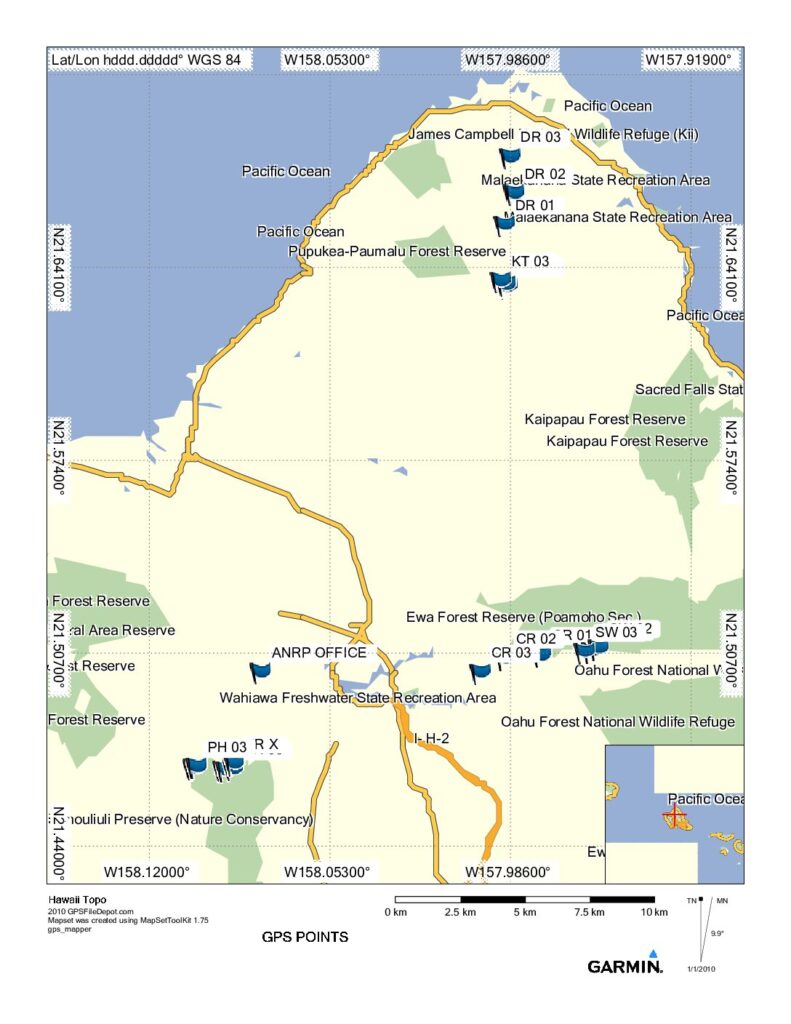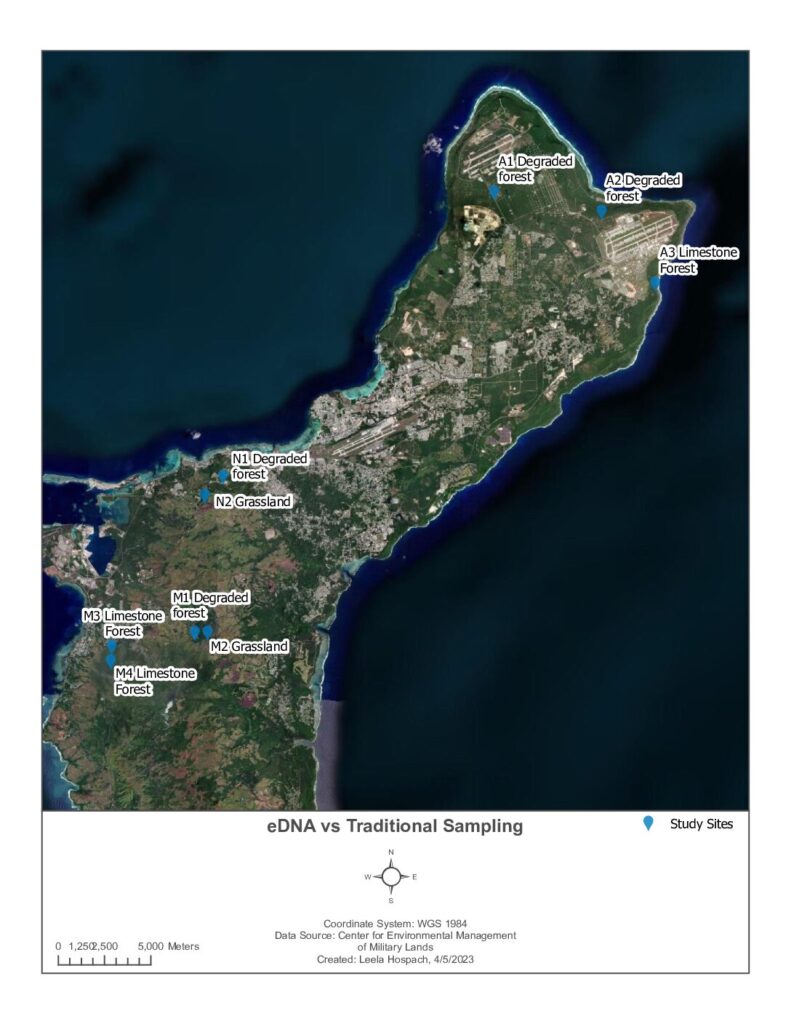Why Study Islands?
We study three different island chains in the Pacific: Hawaii (The Big Island & O’ahu), Guam (Marianas), and Okinawa, Japan
The study of islands as model systems has played an important role in the development of evolutionary and ecological theory. Islands provided Darwin the insights for his theory of descent from common ancestry, and from distinct geographical source areas. Studies of island biotas led Wallace to draw the same conclusion independently of Darwin, and later to defend evolutionary theory.
We study islands because they are sensitive to environmental change due to their small land mass and isolation. Since islands are isolated, they create a relatively simple and controlled environment. There are fewer confounding variables we need to worry about when we study them. Islands are also especially vulnerable to environmental change. Island ecosystems are highly sensitive to the impacts of introduced species. Extinction rates are also higher on islands because island species generally have small populations and restricted genetic diversity.
Islands offer several advantages and unusual opportunities for research, and findings are applied worldwide!
Hawaii (The Big Island & O’ahu)
Many factors make up Hawaii’s island biome. Climate is a major factor that determines what types of life live in a biome.
An island’s windward side faces trade winds. As trade winds blow across the ocean, they pick up moist air from the water. When the damp air ascends mountains, it forms condensation, clouds and precipitation, which causes the windward side of an island to be generally lush and green.
An island’s leeward side faces away from the wind and is sheltered from the prevailing winds by hills and mountains. As the damp air from the windward side moves to the other side, it warms and dries out, causing the leeward side to be drier. Sunny beaches like Waikiki are found on Oahu’s leeward sides.
Windward and leeward are terms that describe the direction of wind relative to a reference point.
– Windward = upwind
– Leeward = downwind
The contrast between the windward and leeward sides of islands is known as the orographic effect. When damp air from the ocean ascends mountains, it forms condensation, clouds, and precipitation. As air moves to the other side of the mountain, it warms and dries out, causing the leeward side to be drier.
Differences in elevation also influence Hawaiis’s weather and climate.
The EDIAS Project team takes eDNA samples from 3 elevation gradients at its various field sites. Each of these gradients is then subdivided into high and low elevations. Between the various sudivided regions across field sites the EDIAS Project team has noticed that areas that are sampled at higher elevations tend to be more pristine whereas areas of lower elevation tend to contain more invasive species.
O’ahu Field Sites:

- Wheeler-Waikele Gulch to Hickam/Pearl Harbor
- Schofield Training Area-Waikane
- Schofield
- Haleauau mid-ridge to Kaala
- Kahuku
Big Island Field Sites:
- Saddle Road
- Pohakuloa Training Area

Guam (Marianas)
Guam’s unique geological history shapes its variety of biomes. The island itself is a volcanic mountain core capped by ancient limestone. This limestone plays an important role in two key ecosystems: limestone forests and grasslands.
Limestone forests which make up a third of the island, thrive on the northern half. Rainwater dissolves the limestone, creating a dramatic landscape of sinkholes, caves, and razor-sharp ridges. The resulting soil is thin and nutrient-poor, favoring plants adapted to these harsh conditions. Sturdy trees like strangler figs with aerial roots and native flora and fauna such as Intsia bijuga can be found in these forests.
Grasslands, while less extensive, paint a contrasting picture. These pockets of savanna and badlands are remnants of when volcanic ash covered the island. Over millennia, rain dissolved the ash, leaving exposed limestone and pockets of fertile soil. These havens nurture grasses like swordgrass and various flowering plants, creating a habitat distinct from the limestone forests.
Similar to Hawaii, the EDIAS Project team takes samples from 3 elevation gradients across the island and compares samples taken from the high and low subdivisions of the gradients. Similarly, the team has found that high subdivisions tend to be more pristine compared to the low elevation.

Okinawa, Japan
More information to come in the future!
